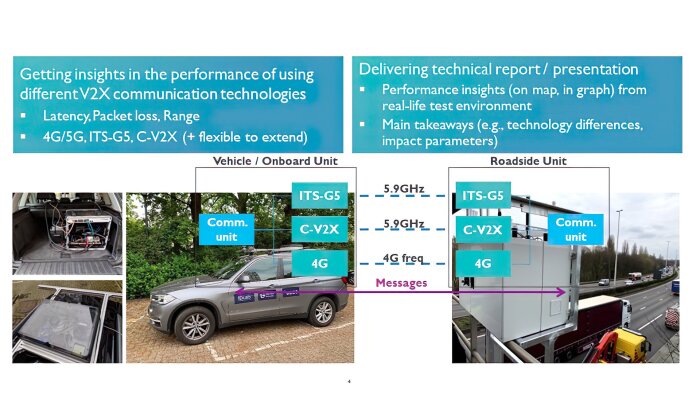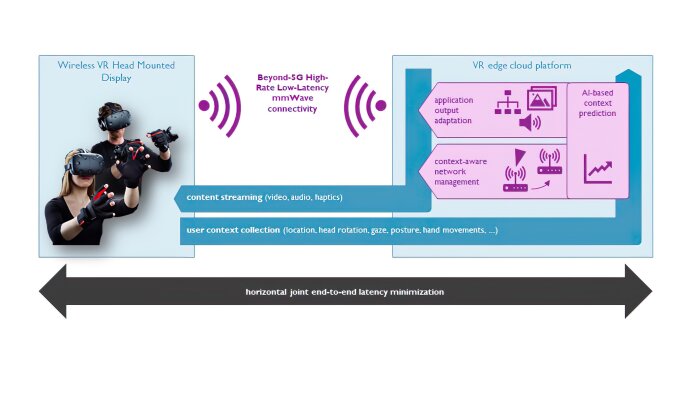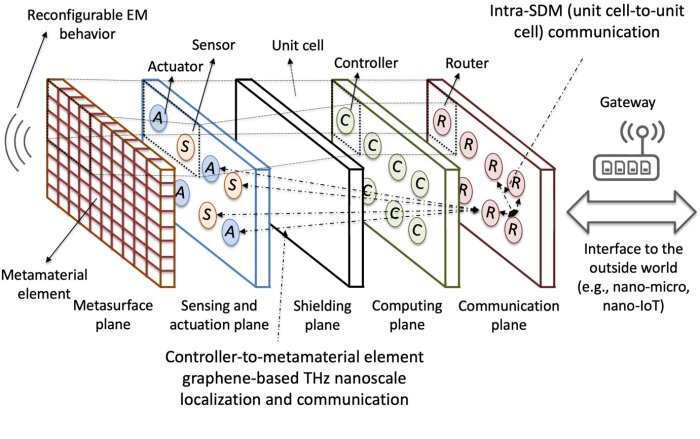Recently, the requirements for wireless networks have evolved from purely bandwidth focused, towards optimizing latency and reliability as well. This shift is driven by the introduction of various novel mission-critical applications that could benefit from wireless connectivity, including industrial automation & control, vehicular communications, immersive augmented / virtual reality (AR/VR), and control of robots & drones. This has led to the introduction of the ultra-reliable low-latency communications (URLLC) traffic class in 5G networks, with a guaranteed end-to-end latency of 1 ms and reliability of at least 99.9999%.
Enabling latencies in the order of milliseconds at such reliabilities requires the development of innovative communications and networking paradigms, protocols and optimization algorithms. In this research track, we investigate, characterize, and optimize the various network components that affect latency. This includes among others channel access, network function positioning, and handovers.
Research examples
- Vehicular Communications: Connectivity on the road requires very low latency communications targeting 1ms latency, paving the way towards connected and automated mobility. Since the main goal of providing connectivity is to improve safety, automotive use cases are usually time-critical supported by the fact that the nodes are highly mobile and dynamic. This research line includes the analysis of communication behaviour of both 3GPP Cellular V2X and IEEE 802.11p / ITS-G5 technologies considering current standardization and potential future enhancements to such standardized technologies. Moreover, we tackle vehicular communications considering real and futuristic demanding use cases on teleoperation or autonomous vehicles, assuring ultra-low latency and reliable communications.
- Millimeter wave (mmWave) and Terahertz (THz) networks for interactive AR/VR: Wirelessly connecting augmented / virtual reality (AR/VR) headsets in multi-user interactive AR/VR poses significant challenges to the underlying wireless network. It requires extremely high data rates (in the order of multiple gigabits per second) to support current and future AR/VR content streaming at ultra-high-definition quality. Moreover, it requires extremely low latencies (in the order of milliseconds) to avoid users from contracting cybersickness and maximizing their immersion. In this research line, we investigate the ability of high data rate mmWave and THz wireless networks to satisfy the millisecond latency requirements of interactive AR/VR applications. We develop optimized channel access and beamforming algorithms, and study seamless handover algorithms to overcome data rate degradations due to obstacles and user movement.
- Intelligent reflective surfaces: While high frequency bands in the mmWave and THz range offer unprecedented data rates, in the order of giga- or even terabits per second, they also suffer from high propagation and attenuation loss (e.g., due to obstacles). Recently, intelligent reflecting surfaces (IRSs) have been proposed as a sustainable and cost-effective solution to avoid dead-spots in mmWave and THz networks. An IRS is composed of many passive scattering elements, that can reflect wireless signals around obstacles. In this research track we investigate two aspects related to IRS. First, we study scalable nanoscale network solutions that use miniature THz transceivers to support low latency many-to-many communication among the IRS scattering elements. Second, we study novel 6G network architectures that incorporate IRSs to support reliable ultra-low latency communications at extreme data rates using mmWave and THz frequencies.
-
 Example of a test setup for V2X connectivity tests, using both onboard unit (OBU) module on the car and a roadside unit (RSU) module on the highway, as part of the Smart Highway infrastructure.
Example of a test setup for V2X connectivity tests, using both onboard unit (OBU) module on the car and a roadside unit (RSU) module on the highway, as part of the Smart Highway infrastructure.
-
 At IDLab, we use context information about the VR users' movement and location to maintain high-rate low-latency connectivity in directional mmWave networks at all times.
At IDLab, we use context information about the VR users' movement and location to maintain high-rate low-latency connectivity in directional mmWave networks at all times. -
 Intelligent reflecting surface composed of many passive scattering elements, that can reflect wireless signals around obstacles to avoid dead-spots in mmWave and THz networks.
Intelligent reflecting surface composed of many passive scattering elements, that can reflect wireless signals around obstacles to avoid dead-spots in mmWave and THz networks.

